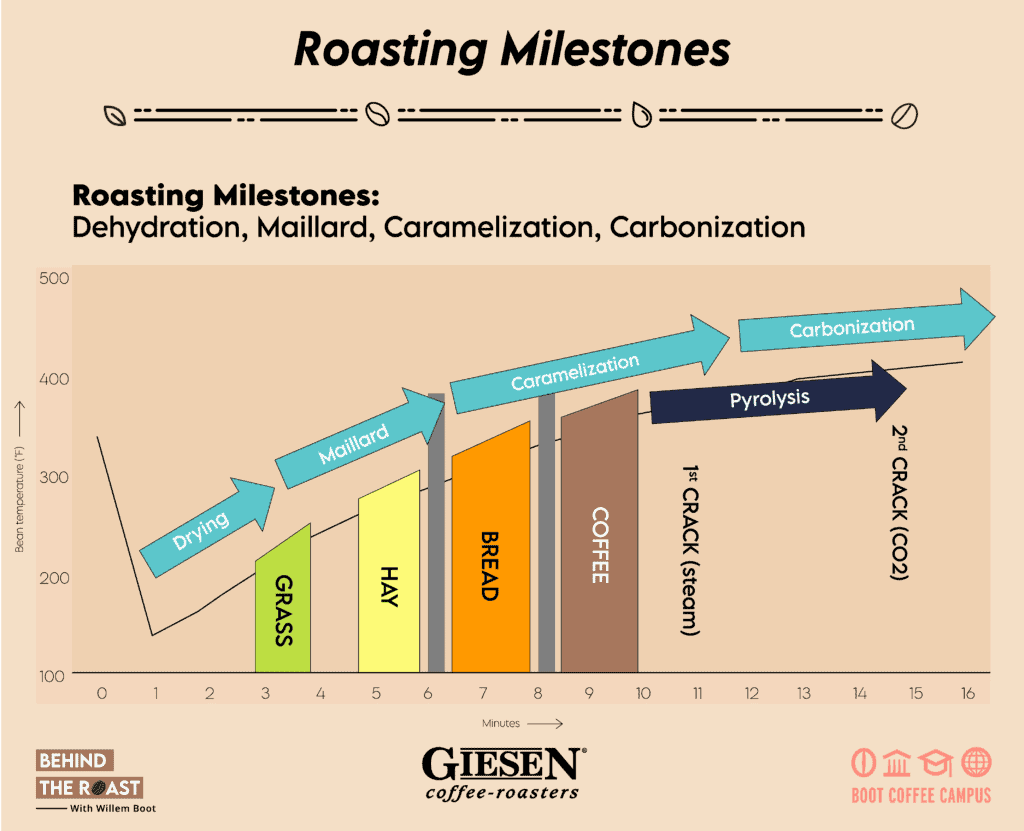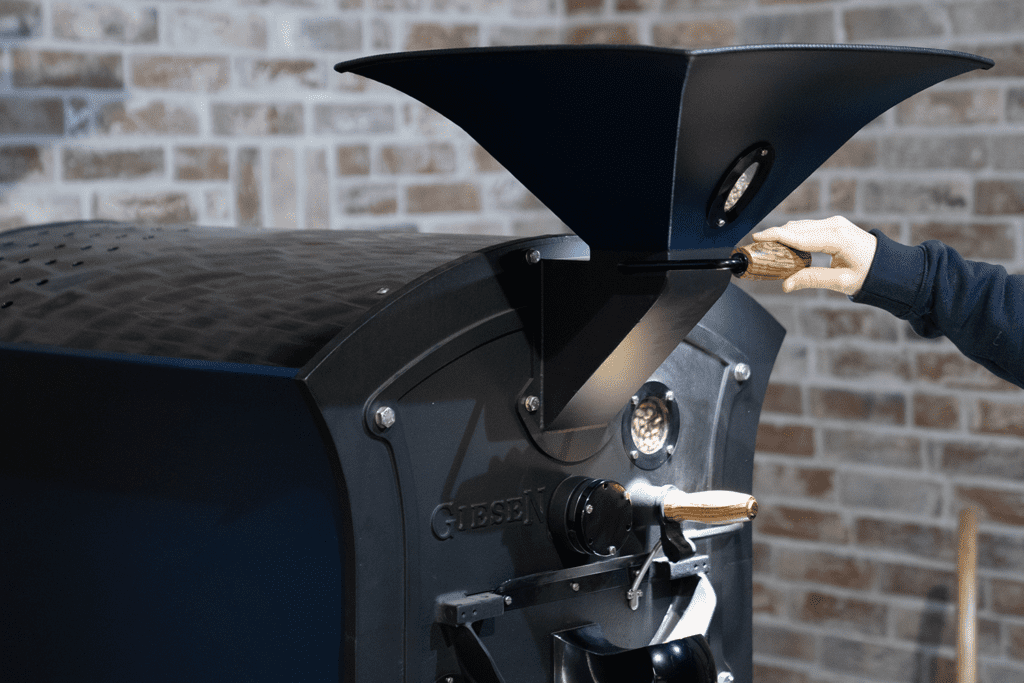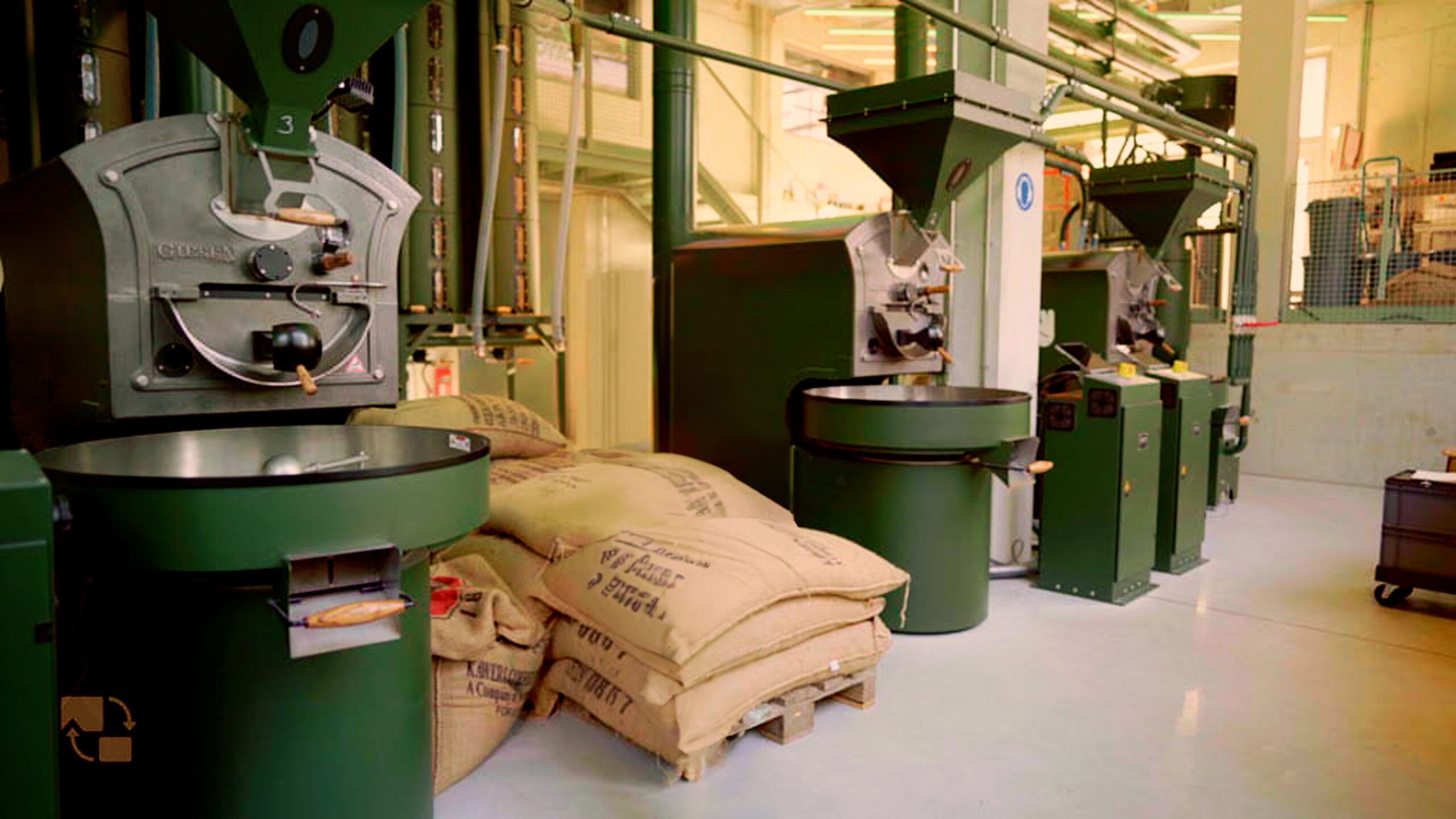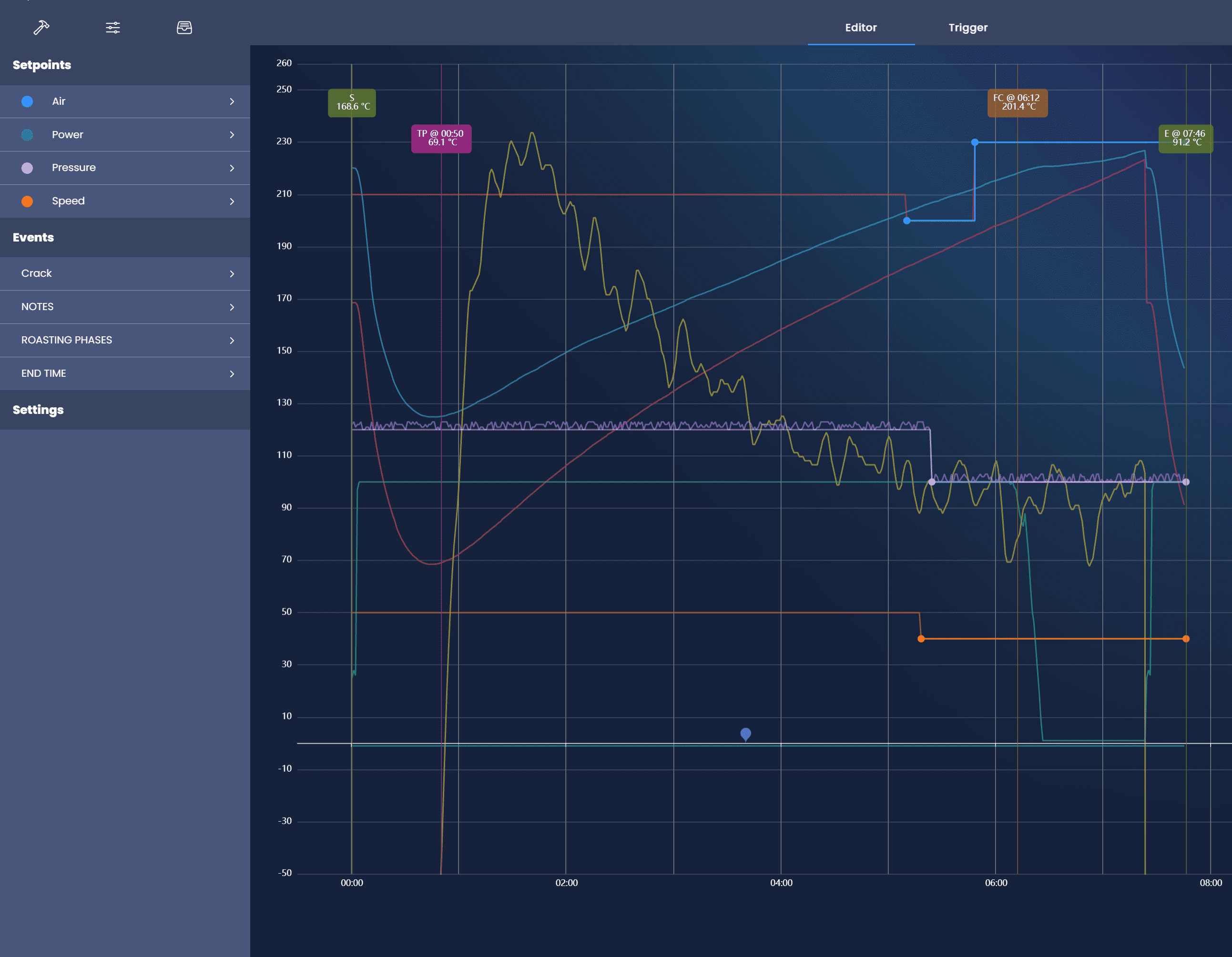The chemistry of coffee roasting has always fascinated me. We should consider the roasting process as a fundamental stage in a coffee’s journey from seed to cup. It unlocks the potential of the green coffee beans by creating hundreds of aromatic compounds. It also makes the beans brittle and porous enough to prepare the coffee for grinding and brewing.
During roasting, several complex chemical transformations occur that have a significant impact on the final flavor of the coffee. We will talk about the different roast phases in this article.

Roast Phase 1: Drying Phase
First, there is the Drying Phase. As soon as we charge the green beans into the drum, the bean temperature starts rising gradually. Honestly, I consider the concept of the “turning point” (TP) as a phantom idea. Why? The widely discussed “TP” is mostly the result of how your temperature probe records the bean’s temperature. When you charge your green beans into the roasting machine, an immediate decline in temperature is recorded as the cool beans encounter the preheated sensor of your bean probe.
Around 100 degrees C (212 degrees F), the roasting cycle really takes off. This is when the free water content of the coffee passes the boiling point of water; steam develops and now the bean’s volume and internal pressure starts to increase. The coffee loses mass and density, and we can perceive a gradual color change from green to yellow.
As a rule of thumb, the drying phase should last between 35% to 45% of the overall duration of the roasting process. If the drying phase evolves too fast, it will result in an uneven heat distribution inside the bean with an increased risk of internal and external scorching.
Want to read about the other phases like the maillard phase?
Subscribe to gain VIP access to our Behind the Roast video’s and premium material. In our Behind the Roast video’s, Giesen ambassador Willem Boot shares his knowledge and roasting experience while roasting coffee. Learn all about a specific type of coffee, the Giesen roaster controls, material types, coffee tools and much more! So grab a cup of coffee, ask your questions, and learn with Willem! SUBSCRIBE HERE.
Willem Boot
Willem Boot is Brand Ambassador of Giesen Coffee Roasters and founder of Boot Coffee Campus, a leading coffee training institute for the coffee industry. Check the program of specialized courses at www.bootcoffee.com




